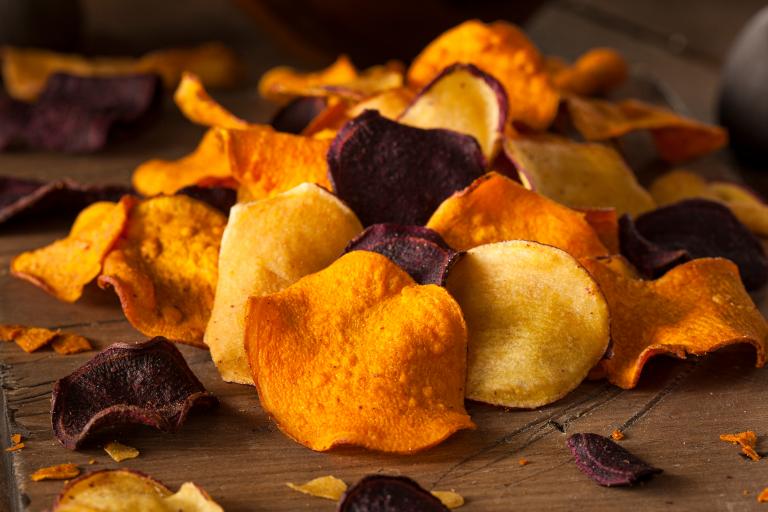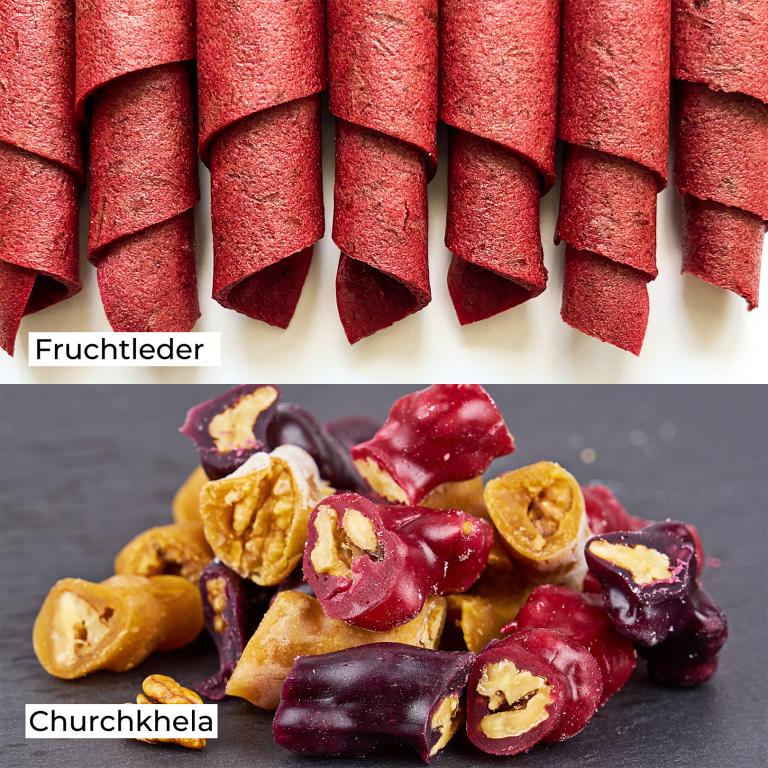Wie Sie Ihr Sortiment um gesunde Snacks erweitern können
Trends in der Gesellschaft wirken sich direkt auf industrielle Betriebe aus, die ihre Prozesse und Produkte kontinuierlich an die sich ständig ändernden Bedürfnisse der Verbraucher anpassen müssen. Neben kurzlebigen Entwicklungen gibt es auch solche, die bleiben wie der Trend Gesundheit. Es ist schwierig, den Fokus auf eine körperliche und mentale Gesundheit als Trend zu bezeichnen, schließlich ist uns unser Wohlbefinden schon immer wichtig gewesen, doch gerade in der Lebensmittelindustrie ist nicht zu übersehen, dass der Wunsch nach einer bewussten Ernährung in den letzten Jahren stark gewachsen ist und gesunde sowie nachhaltige Lebensmittel in den Vordergrund rücken.
Der Gesundheitstrend wirkt sich auch stark auf Snacks aus, denn den Verbrauchern ist bewusst, dass auch die kleinen Zwischenmahlzeiten Auswirkungen auf ihre Gesundheit haben. Zudem weicht das traditionelle Frühstück, Mittagessen und Abendessen mit der Familie zunehmend kleinen Snacks, die über den ganzen Tag verteilt sind. Das liegt daran, dass die Gesellschaft ihren Tagesablauf nicht mehr an die Mahlzeiten anpasst, sondern umgekehrt. Wer arbeiten geht, hat nicht immer Zeit für ein ausgedehntes Mittagessen und greift dann auf Snacks zurück. Diese sollen dann aber nicht mehr einfach nur lecker, sondern auch gesund sein, denn sie ersetzen eine oder mehrere Hauptmahlzeiten.
Ein großer Teil der Verbraucher sieht vor allem solche Produkte als gesund an, die aus natürlichen und damit leicht verständlichen Inhaltsstoffen bestehen, denen sie vertrauen können, ohne chemische Zusatzstoffe. Diese Entwicklung stellt Betriebe und Lebensmittelhersteller vor eine Herausforderung, denn um ihre Produkte natürlicher zu gestalten, müssen wichtige Bestandteile wie künstliche Geschmacksverstärker ersetzt werden. Dabei ist wichtig, dass natürliche und gesunde Produkte sich nicht verkaufen, wenn sie nicht schmecken. Zudem legen viele Verbraucher wert auf vegane und glutenfreie Snacks.
Wir haben uns in den letzten Wochen mit der
Verarbeitung von Obst und Gemüse befasst und werfen in diesem Artikel einen Blick darauf, wie die gesunden Rohstoffe zur Herstellung gesunder und attraktiver Snacks eingesetzt werden können, die den Bedürfnissen der Verbraucher entsprechen.
Gesunde Snacks
Der Bedarf nach Snacks, die nicht nur lecker, sondern auch gesund sind, ist nicht ganz neu. So stehen zum Beispiel Smoothies aus püriertem Obst und Gemüse schon lange in den Supermarktregalen, denn da sie mit Ausnahme der Kerne aus ganzen Früchten, teilweise sogar den Schalen bestehen, enthalten sie viele wertvolle Inhaltsstoffe.
Nährstoffreiche Smoothies können auch außerhalb der Saison der gesunden Rohstoffe angeboten werden, zum Beispiel durch die Verwendung von gefriergetrocknetem Obst und Gemüse, das ganzjährig verfügbar ist.
In unserem Artikel über das
Gefriertrocknungsverfahren letzte Woche haben wir bereits erwähnt, dass mit diesem Verfahren behandeltes Obst und Gemüse auch in Müsli, Riegeln und Schokolade verarbeitet werden kann. Auch wenn diese Produkte nicht vollständig aus Früchten bestehen, können sich zum Beispiel Müslis mit gefriergetrockneten Früchten von der Konkurrenz abheben, weil die Hersteller mit den natürlichen und nährstoffreichen Zutaten werben können, die mehr Vitamine und Ballaststoffe enthalten als durch andere Verfahren getrocknete Früchte. Darüber hinaus haben die Früchte die gleichen intensiven Farben wie das frisch geerntete Obst, was sie optisch attraktiv macht, ohne dass Farbstoffe in die Zutatenliste aufgenommen werden müssen, egal ob künstlich oder natürlich.
Gefriergetrocknetes Obst/ Gemüse kann auch zu Pulver, Pasten oder Pürees verarbeitet werden und in dieser Form ebenfalls als Zutat für Schokolade sowie Riegel dienen. Hier sind grob gemahlene Produkte nicht weniger attraktiv als feine, denn erkennbare Fruchtstückchen überzeugen Verbraucher von der Natürlichkeit der Pulver und Pürees. Das Pulver kann auch einzeln verkauft und vom Verbraucher zum Beispiel über Joghurt gestreut werden.
In Form von Pasten oder Pürees können die gefriergetrockneten Früchte darüber hinaus als cremige Füllung für Teilchen sowie Muffins und Kekse eingesetzt werden. Auch im Ganzen sind sie zum Backen geeignet, da ihre Restfeuchte mit 1 - 4 % sehr gering ist und sie somit wenig Einfluss auf den Teig haben. Die konservierten Früchte können also ganz oder klein gehackt, einfach dem Teig untergerührt werden und so ebenfalls Teilchen, Muffins und Kekse verfeinern.
Ein weiterer Vorteil von frischem oder gefriergetrocknetem Obst und Gemüse ist, dass sie einen geringeren Fruktosegehalt haben als Rohware, die mit herkömmlichen Methoden getrocknet wurde, da sie noch Ballaststoffe und Vitamine enthalten. Wenn Rohstoffe durch hohe Temperaturen getrocknet werden, gehen hitzeempfindliche Vitamine und Ballaststoffe verloren, was zu höheren Konzentrationen von Fruktose in den Endprodukten führt.
Inspiration aus dem Ausland
Um den Bedürfnissen der Verbraucher gerecht zu werden, ist es an der Zeit, das Angebot an Snacks im deutschen Einzelhandel zu erweitern. Dort ist bereits eine Entwicklung zu beobachten, denn während früher Apfelchips die innovative Alternative zu Kartoffelchips waren, gibt es heute auch Rote Beete- und Zucchini-Chips und viele andere getrocknete Gemüsesorten zum Knabbern. Ein ausländisches Startup bietet eingelegtes Gemüse, das bisher eher für den Hausgebrauch gedacht war und üblicherweise in Gläsern verkauft wird, jetzt in kleinen Portionen für unterwegs an. In Tüten verpackt, ohne Salzlake, der flüssigen Lösung, in der das Gemüse eingelegt wird.
Bereits etablierte Produkte werden optimiert, um sich dem Trend anzupassen und wettbewerbsfähig zu bleiben. Darüber hinaus könnten Unternehmen sich Inspiration aus dem Ausland holen, denn dort übliche gesunde Obstsnacks kennt in Deutschland fast niemand.
Fruchtleder
Fruchtleder besteht aus pürierten, gekochten und getrockneten Früchten und hat seinen Ursprung vermutlich im Mittleren Osten, in Syrien und Umgebung. Dort wird es “Amardeen” genannt und bezeichnet vor allem Fruchtleder aus Aprikosen. Schon in den 90-er Jahren wurde es in Amerika als Snack für Kinder eingeführt, wo er sich immer noch großer Beliebtheit erfreut.
Fruchtleder kann aus jeder beliebigen Frucht oder einer Mischung aus verschiedenen Sorten hergestellt werden. Die Früchte werden mit oder ohne Schale püriert und gekocht. Die entstandene Masse wird dann auf eine flache Oberfläche gestrichen und so getrocknet. Seinen Namen hat das Fruchtleder, welches je nach Hersteller in Streifen oder Formen geschnitten oder gerollt wird, weil die trockene Masse fest und glänzend wie Leder ist. Das fertige Produkt ist auch ungekühlt in der Regel lange haltbar.
In Amerika wird das Fruchtleder vor allem gerollt, in lustigen Formen und mit knalligen Farben als gesunder Snack für Kinder verkauft, der aber leider oft vor allem Zucker und nur einen kleinen Anteil an Fruchtpüree enthält. Und das, obwohl die ursprüngliche Variante zu 100% aus Früchten besteht.
Churchkhela
Churchkhela ist ein traditioneller georgischer Snack aus Nüssen und Traubenmost, der als Nachspeise oder zwischen den Mahlzeiten serviert wird. Er wird normalerweise im Herbst hergestellt, wenn die Trauben und Nüsse geerntet werden.
Zuerst werden die Nüsse geschält und in Wasser eingeweicht, um dann auf zwei bis drei Meter lange Fäden aufgefädelt zu werden. Oft werden Walnüsse benutzt, aber im Westen von Georgien auch Haselnüsse oder Mandeln und manchmal werden noch Rosinen hinzugefügt. Die Fäden werden dann in den Traubenmost getaucht, ein Saft aus Weintrauben, der sehr reich an Mineralstoffen ist und meist durch Keltern gewonnen wird, d. h. Fruchtfleisch, Kerne und Schalen werden gemeinsam in einem Kelter zerdrückt, der schonend den Saft auspresst. Der Most wird mit Mehl eingedickt und die aufgefädelten Nüsse mehrfach, üblicherweise dreimal vollständig eingetaucht, damit die Churchkhelas die richtige Dicke haben.
Sie sehen aus wie Kerzen und werden fünf bis sechs Tage lang an der Sonne getrocknet, bevor sie verzehrt oder gelagert werden, obwohl manche sie auch gerne frisch essen. Die traditionellen Churchkhelas enthalten keinen Zucker und wurden früher von georgischen Kriegern mitgegeben, weil sie lange haltbar sowie sättigend sind und viele Kalorien enthalten.
Außerhalb Georgiens sind sie auch in vielen anderen Ländern beliebt, unter anderem im Iran, Armenien, Griechenland, Russland, Pakistan und der Türkei. Dort sind sie zum Beispiel unter dem Namen “sujuk” (Wurst) oder “cevizli sucuk” (Walnusswurst) bekannt. Sowohl Fruchtleder als auch Churchkhelas sind ein Beispiel dafür, dass die Möglichkeiten zur Erweiterung der Produktpalette mit neuen und gesunden Snacks noch lange nicht ausgeschöpft sind.
Der Gesundheitstrend ist nicht neu, aber er gewinnt an Bedeutung, weshalb neu gegründete Startups auf gesunde und natürliche Inhaltsstoffe sowie nachhaltige und biologisch abbaubare Verpackungen für ihre Produkte setzen. Unternehmen können in Zukunft profitieren, wenn sie jetzt ihre Produkte optimieren und ihr Sortiment erweitern.
Let's simplify the future of change





